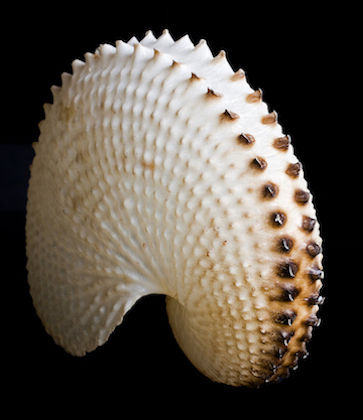420216-Paper Nautilus Shell.jpg

Paper nautilus shell. Credit: Wikipedia, JJ Harrison
When it’s time for most female octopuses to lay their eggs, they seek out a cave or other protected space. But not the argonaut. This tiny octopus makes her own protected space — a paper-thin shell. Mom and the eggs float through the open ocean inside the shell until the eggs hatch and the little ones go their own way.
The argonaut is found in warm waters around the world. The male is less than an inch long. The female is many times larger — up to a few inches long. When she’s ready to lay her eggs, she uses glands on two of her arms to create a shell for both the eggs and herself. It’s thinner than a sheet of paper, and it resembles the spiral shell of a nautilus, so the argonaut is also known as the paper nautilus.
At the surface, the mother takes a bubble of air into the shell. She then closes the shell and drops deeper into the water. At the right depth, the bubble allows her to float along without having to use much energy for swimming or maintaining her depth.
Argonauts sometimes wash up on shore, or their shells are found floating in the ocean. That convinced many that the shells were actually sails that allowed the argonaut to skim along the surface. In Twenty Thousand Leagues Under the Sea, Jules Verne had hundreds of the creatures sail past his submarine, the Nautilus.
Like many other organisms, the argonaut could be endangered by our changing climate. Warmer and more acidic waters could dissolve the shells — making it impossible for a mama argonaut to protect her offspring.

